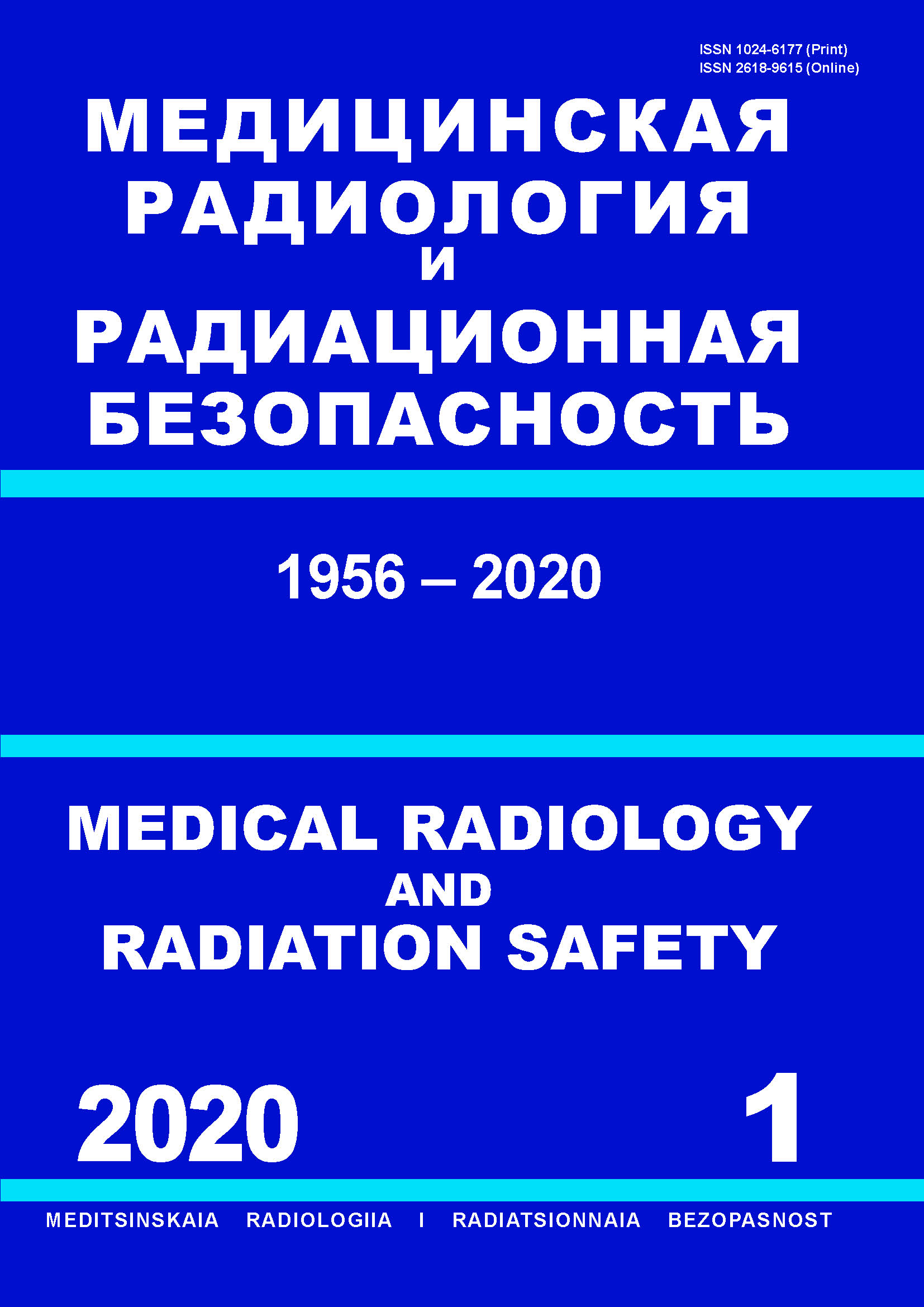CSCSTI 76.03
CSCSTI 76.33
Russian Classification of Professions by Education 14.04.02
Russian Classification of Professions by Education 31.06.2001
Russian Classification of Professions by Education 31.08.08
Russian Classification of Professions by Education 32.08.12
Russian Library and Bibliographic Classification 51
Russian Library and Bibliographic Classification 534
Russian Trade and Bibliographic Classification 5708
Russian Trade and Bibliographic Classification 5712
Russian Trade and Bibliographic Classification 5734
Russian Trade and Bibliographic Classification 6212
Purpose: Development of a method for calculating radioactive aerosol dose coefficient when the aerosol particle size measurements resulted in a multimodal radionuclide activity distribution by particle diameters. Material and methods: The physical prerequisite for the proposed method is that the multimodal distribution may be caused by the presence of several sources of aerosols with different particle sizes. In the ICRP database to each value of the aerosol dose coefficient there corresponds one of ten functions of log-normal (unimodal) distribution with specified parameters. In the developed method the result of the aerosol particle size measurement is approximated by the sum of said standard functions with weight factors of each of the functions defined such that the best least squares approximation is obtained. Then the dose coefficient of the aerosol under study is calculated based on the dose value additivity property, i.e. each weight factor is multiplied by a respective value of the dose coefficient from the ICRP database, and the obtained products are added up. Results: There was carried out a series of numerical experiments, in each of which “experimental” points were simply plotted on a graph of a certain cumulative distribution function. Coordinates of the points are used as input for the programme implementing the developed algorithm. The calculated dose coefficient value is compared with the true value and/or the value obtained with the linear interpolation method using the AMAD. Conclusion: Physical prerequisites and results of numerical experiments confirm the validity of the developed method.
radioactive aerosol, aerodynamic diameter of a particle, activity distribution, approximation, dose coefficient, ICRP database
Известно, что доза внутреннего облучения, обусловленная ингаляционным поступлением радионуклида, определяется по соотношению вида [1]:
E= e(50)I, (1)
где E – ожидаемая (полувековая) эффективная доза, Зв; e(50) дозовый коэффициент (эффективная доза на единицу поступления), Зв/Бк; I – поступление радионуклида через органы дыхания, Бк.
Поступление I устанавливается по результатам радиационного мониторинга (индивидуального или рабочих мест), дозовый коэффициент e(50) – известная (табулированная) величина, представленная в Нормах безопасности [1, 2] и, наиболее полно, в базе данных МКРЗ [3]. Дозовый коэффициент зависит от физико-химических свойств радионуклида и, в частности, от дисперсности аэрозоля.
1. IAEA. International Basic Safety Standards for Protection against Ionizing Radiation and for the Safety of Radiation Sources. Safety Series No. 115, 1996.
2. Radiation Safety Standards (NRB-99/2009). SP 2.6.1.2523-09. Moscow: Federal Center for Hygiene and Epidemiology, Rospotrebnadzor, 2009, 100 p.
3. The ICRP Database of Dose Coefficients: Workers and Members of the Public. ICRP CD-ROMS (Version 3.0, 1998 - 2011).
4. Human Respiratory Tract Model for Radiological Protection, ICRP Publication 66, Annals of ICRP, 1994.
5. Reist P.C. Introduction to aerosol science. New York: Macmillan, 1984, 299 p.
6. Sukhoruchkin A.K. Calculation of the dose factor for aerosol having arbitrary particle size distribution. In collection: Safety issues related to nuclear power plants and Chernobyl. Chernobyl. 2005. Issue 3, Part 1, pp. 98 - 101.
7. Maple 2018.2. Licensed to: NRC Kurchatov Institute. //www.maplesoft.com.
8. Fuks N.A. The Mechanics of Aerosols. Moscow, USSR Academy of Sciences Publishing House. 1955. 352 p.





